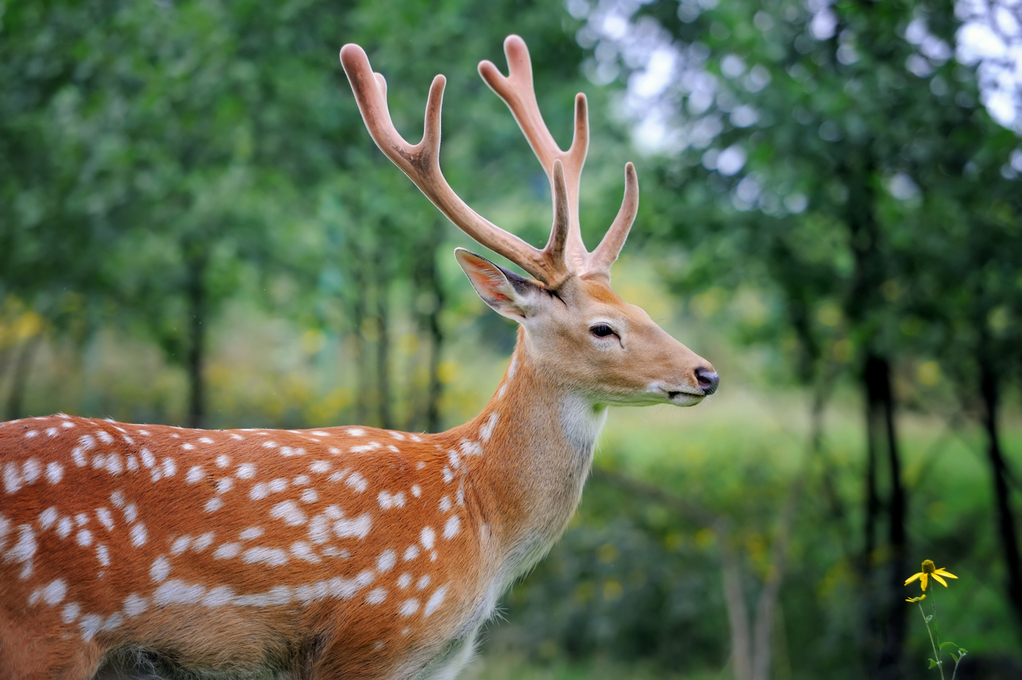The whitetail deer is one of North America’s most recognizable and coveted game animals. Their evasiveness and acute sensibilities make them a difficult target for hunters. To increase the likelihood of successful whitetail hunts, it is essential to have a thorough comprehension of whitetail deer behavior. This post will explore whitetail deer’s habits, communication, and seasonal patterns to help you become a more experienced and knowledgeable hunter.
The World of Whitetail Deer
Before delving into behavior, it is crucial to comprehend the environment in which whitetail deer exist. They predominantly inhabit forests, woodlands, and agricultural areas, where they feed on diverse vegetation, including grasses, leaves, acorns, and crops such as corn and soybeans. The initial step in comprehending their behavior is understanding their preferred habitats and food sources.
Perceptual Sensation
Whitetail deer have an extraordinary sensory perception, making hunting challenging and fascinating.
Hearing: Deer have extraordinary hearing and can detect the faintest noises. They can independently rotate their hearing to locate the origin of a sound. Even the slightest rustle or murmur can alert deer to the presence of a hunter.
Vision: Whitetail deer have binocular vision, which provides them with an excellent sense of depth. As they can detect motion, remaining still is essential when hunting. However, their color vision is restricted to the blue and yellow spectrum, and they perceive objects in grayscale. Therefore, it is advantageous to wear camouflage, but movement and outline are more crucial.
Smell: The most potent asset of a deer is its keen sense of scent. They have up to 297 million olfactory receptors in their nostril, compared to approximately 5-6 million for humans. You can avoid being detected by a deer’s keen olfactory by understanding wind direction and using scent-elimination products.
Feeding Behavior
Whitetail deer are predominantly herbivores, and the time of day and season affect their dietary behavior. Crepuscular means that they are most active at dawn and twilight. During the early morning and evening hours, deer frequently travel from their sleeping areas to their feeding grounds. Understanding their dietary habits allows hunters to predict their movements.
Whitetails ingest primarily grasses, forbs, and tender new growth of shrubs and trees during the spring and summer. They consume acorns, browse, and agricultural commodities as seasons change. Knowing what they have access to in your hunting area can give you an advantage when attempting to forecast their movements.
Sleeping Routines
A deer’s sleeping area must be secluded and secure. Thickets, tall vegetation, and other dense cover frequently surround these regions. Understanding the location of these habitats is often crucial for hunters. Deer typically rest during the middle of the day, particularly during hot weather, and return to their grazing grounds in the late afternoon.
Social Interactions
There is a social hierarchy among whitetail deer. During the rut, the breeding season of deer, bucks (males) assert their dominance through antler displays and fights. Does live in social groups with their young. Understanding this social structure enables hunters to predict the behavior of various ages and sexes of deer.
Rut Conduct
The rut is one of the most thrilling periods for whitetail hunts. During this time, in late autumn, bucks become more aggressive and active as they compete for partners. They engage in rubbing, scraping, and vocalizations, including growls and snorts. Understanding rut behavior can assist hunters in selecting the most effective whitetail deer hunting strategies, such as using deer calls or strategically placing scent lures.
Communication
Deer communicate via vocalizations, body language, and scent marking. These forms of communication can help you become a better hunter.
Vocalizations: Deer generates a variety of vocalizations, such as grunts, snorts, and bleats. During the rut, males frequently use grunts to indicate dominance and presence. Does and fawns utilize bleats to communicate, mainly when separated.
Body Language: Deer communicate with one another through body language. Raising a tail, for instance, indicates alertness or danger, while lowering a tail suggests relaxation. Understanding these signals can aid in determining a deer’s disposition and intentions.
Scent Marking: Deer use scent to communicate with other deer and to designate their territory. Bucks leave their scent by leaving scratches on the ground and rubbing their antlers on trees. Does use pheromone marking to indicate their sexual availability. During the rut, hunters can use aromas and lures strategically to attract deer.
Seasonal Patterns
Understanding these seasonal patterns is crucial to successful whitetail deer hunting.
Spring and Summer: Deer primarily focuses on feeding and developing during the spring and summer. They may be less active during the day’s heat, and their movement patterns are frequently more predictable.
Fall: Deer are more active in the autumn as the weather cools and the rut approaches. Changing food sources and the desire to reproduce can increase daytime activity.
Winter: In colder regions, deer may form sizable herds for protection and warmth. They concentrate on energy conservation and locating food sources that provide essential nutrients.
Understanding the whitetail deer’s behavior is crucial for successful hunting. Their incredible senses, feeding patterns, bedding areas, social structure, rut behavior, and communication methods all influence how you approach and interact with these magnificent animals.
A knowledgeable and patient hunter has a greater chance of outwitting their elusive prey and experiencing the thrill of a whitetail deer quest. As you continue to understand and respect the complexities of their behavior, you will not only become a better hunter, but you will also develop a profound appreciation for these magnificent creatures and the natural world they inhabit.

